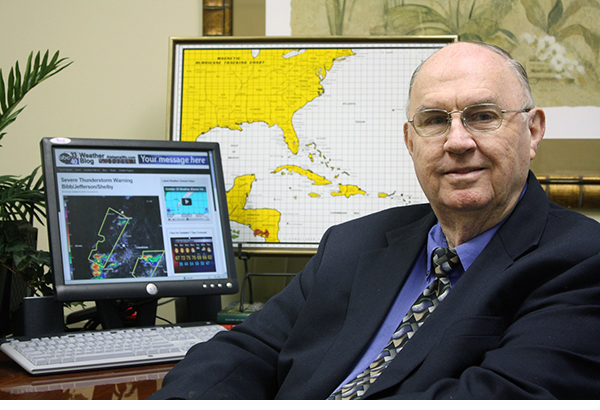What Exactly Is The Fujiwhara Effect?
While in the heart of the 2018 hurricane season, we have already seen and heard about the powerful effects that these storms possess. Incredible winds, torrential downpours and drastic flooding, hurricanes are already nothing to mess with—a single hurricane that is. What happens when two hurricanes interact with one another and possibly collide?
Sakuhei Fujiwhara, a Japanese meteorologist who made his namesake for the Fujiwhara Effect, may help us answer this question. Sakuhei studied cyclonic vortices closely and discovered that under certain circumstances and if in close proximity, two cyclones can actually orbit one another and eventually converge on the center of their rotation. Dr. Fujiwhara performed numerous experiments and observations on water vortices between 1921 and 1923 and discovered that two vortices would rotate cyclonically about an axis connecting the two vortices’ center. While in Norway studying Meteorology with his advisor, Vilhelm Bjerknes, he constructed a small pool with turbines toward the bottom to replicate the rotation of cyclones. Once turned off, the vortices would freely rotate and had the tendency to orbit about a central point between the two. The two vortices would also tend to approach one another until finally merging. Once rotation began between the two, they would rotate around one another in a counter-clockwise direction (in Northern Hemisphere). The center of rotation is not necessarily the geometric center of the two. Naturally, the stronger vortex or cyclone would have a dominant effect on the weaker one. In the context of tropical cyclones, there is a larger scale to be dealt with. Extratropical cyclones, or mid-latitude cyclones, typically engage in a Fujiwhara Effect-like interaction when they are approximately 2,000 kilometers (1,200 miles) away from each other. For tropical cyclones, or Hurricanes, usually only need about 1,400 kilometers (870 miles) to potentially have some influence on one another.
In a world where weird and unpredictable weather can occur, the Fujiwhara effect is an event that is as rare as one would typically hear about it. These events do not happen every year or even every other year. The proper ingredients need to be in place in order for this event to occur and that’s why when it does occur, it is quite the sight to see.
To learn more about other tropical cyclone-related stories from around the world, be sure to click here
©2018 Weather Forecaster Alec Kownacki
AlabamaWX is pleased to partner with the Global Weather and Climate Center team for outstanding posts about our atmosphere. Visit them at https://www.globalweatherclimatecenter.com for more great information!
Category: Partner News Stories
















